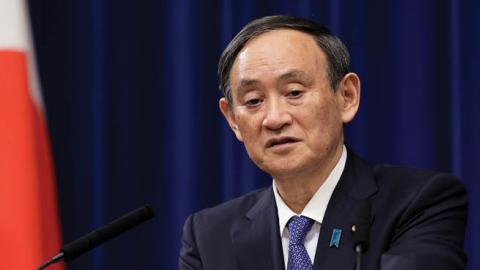Washington’s cherry blossoms are beyond their peak, but the U.S.-Japan alliance will be in full bloom this Friday when Prime Minister Yoshihide Suga becomes the first foreign leader to visit President Biden in the White House.
Even if seldom mentioned by name, China is the unmistakable fulcrum around which alliance policy on all issues turns. Competition with China is primarily economic and technological, but these issues often spill over into security and human rights.
Economically, a rebounding U.S. economy and Japan will collaborate to strengthen the resilience of vital supply chains. Semiconductor chips are essential for all electronics, and Suga and Biden are determined to ensure their availability. Equally, the U.S. and Japan have an opportunity to leverage their two-year-old digital trade agreement to help negotiate a multilateral accord and establish high international standards for finance and commerce in the cyber age.
As a dominant player in semiconductor manufacturing and a member of APEC and the World Trade Organization, Taiwanshould play a part in both supply chain security and digital trading standards. Indeed, bolstering Taiwan’s place in the global economy of other democracies is a far better means of thwarting Beijing’s intimidation strategy against Taiwan than just sailing near the Taiwan Strait with an aircraft carrier.
The commanding heights of the 21st century economy center on technology. So, while the United States and Japan retain a strong interest in economic cooperation with China, those relations become considerably sharper over leading-edge technologies such as 5G telecommunications, artificial intelligence and quantum computing. Biden and Suga should showcase their commitment, not against China, but in favor of technological innovation and secure connectivity.
An excellent way for the alliance to demonstrate a commitment to practical technology cooperation would be to work together to expand investment in 5G Open Radio Access Networks (ORAN). Given the concerns surrounding allowing China to dominate fifth-generation telecommunications infrastructure, the United States and Japan need to scale up a cloud-based software alternative. The good news is that Japan’s Rakuten is already a leader in demonstrating ORAN’s feasibility, and there is bipartisan support in Congressfor increasing U.S. investment in modular 5G.
The alliance also requires deeper cooperation on cybersecurity. Of five issues highlighted at the recent 2 + 2 meetingbetween U.S. and Japan defense and foreign ministers, cyberspace was the most traditional national security issue. Japan is inching closer toward becoming a de facto sixth member of the Five Eyes intelligence-sharing arrangement, and the Biden administration should encourage that trajectory. A stronger digital alliance can, in turn, advance cyber resilience throughout the Indo-Pacific region.
Politically, the alliance can take heart that Suga appears willing to lift democratic Japan’s voice in favor of human rights. China seeks to silence its critics and penalize those who speak out about China’s “internal affairs” — even when those affairs involve the egregious mistreatment of Uyghurs in Xinjiang and appear to violate all aspects of the United Nations Convention on Genocide. Chinese leader Xi Jinping has encouraged “wolf-warrior” diplomacy, urging officials to “unsheathe their swords” to protect China’s dignity. Biden and Suga should make the case that democracies work better than authoritarian governments — not least by protecting individual liberty. The two leaders need to mobilize their societies and build out democratic solidaritywithout resorting to ethnic stereotypes, racism, or xenophobia.
Militarily, a key challenge facing the alliance is how to impose costs on China’s gray-zone nibbling while deterring Beijing’s temptation to leap to the use of force. The potential for a dust-up over the Senkaku Islands or Taiwan is real. At the summit, Biden will reaffirm America’s Article V commitment to the defense of Japan, including territories under its administration. Suga should take a crucial reciprocal step by declaring that any attack on U.S. forces in Japan is equivalent to an attack on Japan. Preparation for the defense of the Senkakus bolsters readiness for Taiwan scenarios. The declaratory policy can give further impetus to deeper integration of U.S.-Japan command and control, even while maximizing complementary forces.
While China will be the elephant in the room at the White House summit, it need not be the foreboding presence lurking in the myth of a supposed Thucydides Trap. Instead, Biden and Suga can spur Xi into a brighter future for all, encouraging China to achieve carbon neutrality by mid-century, rather than 2060, and engaging in a win-win competition over clean-energy technology.
Although we cannot sustain cherry blossoms for long, at least we can marvel at the public goods that can emanate from an alliance in full bloom.
Read in The Hill















